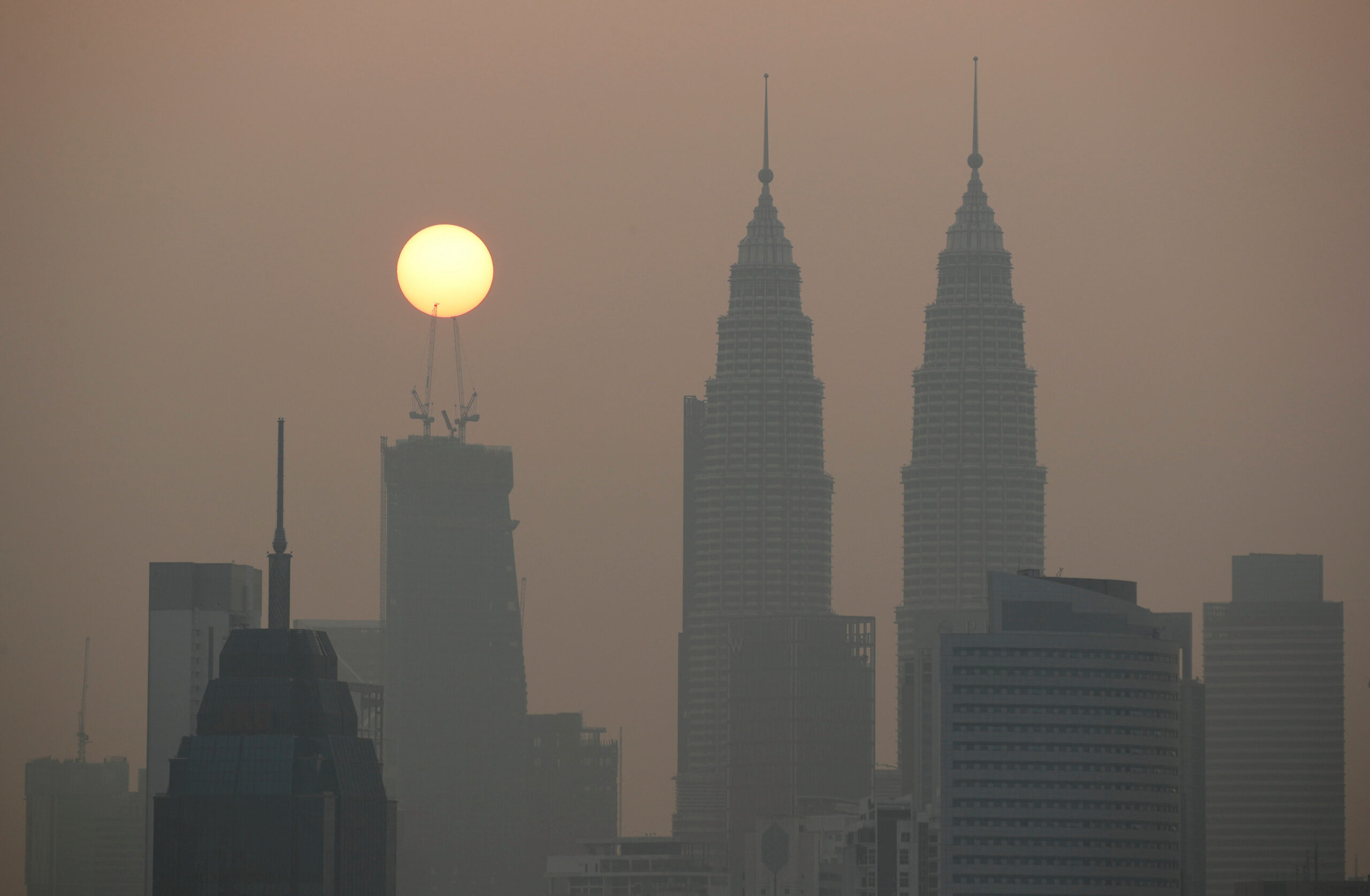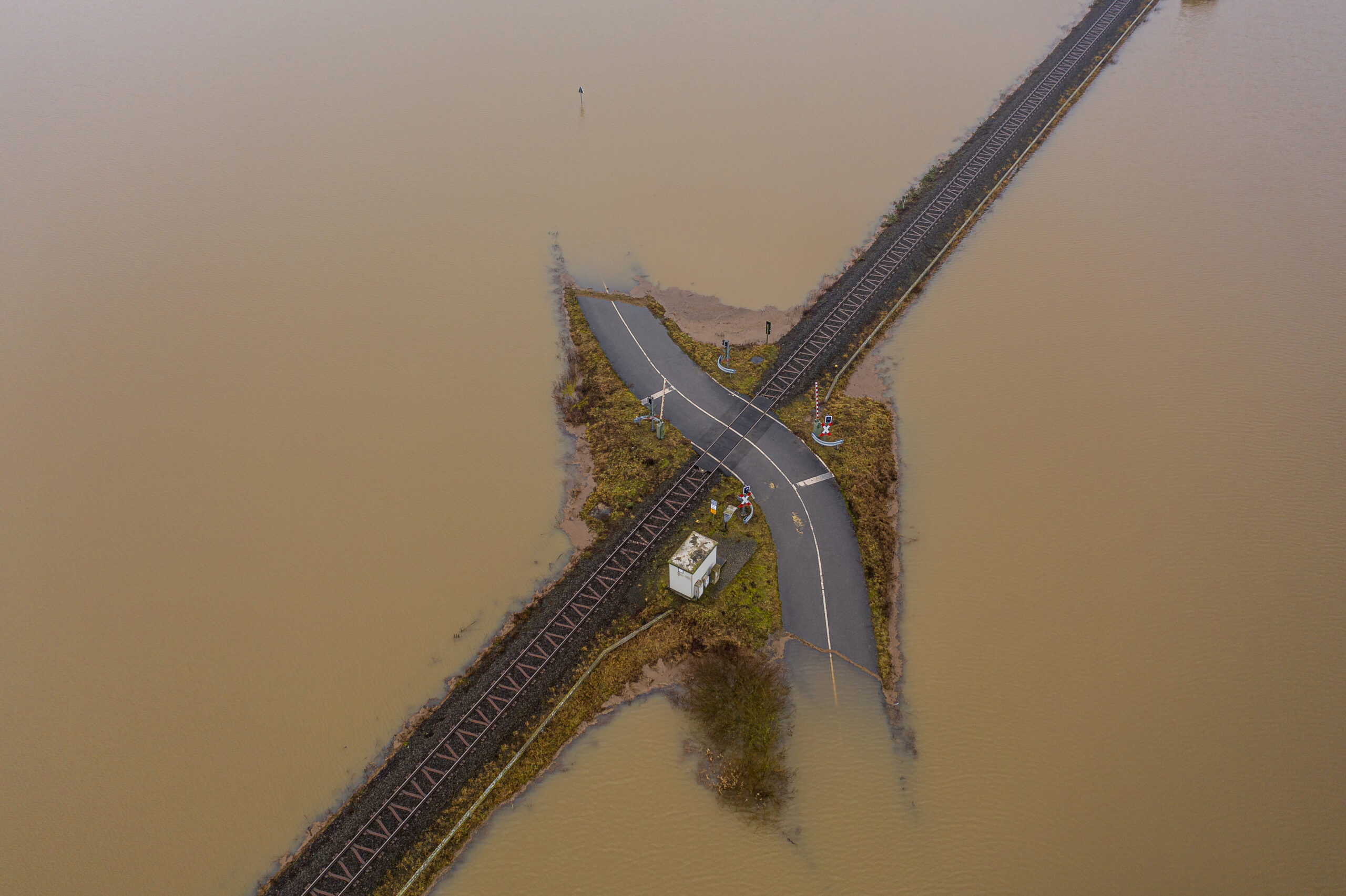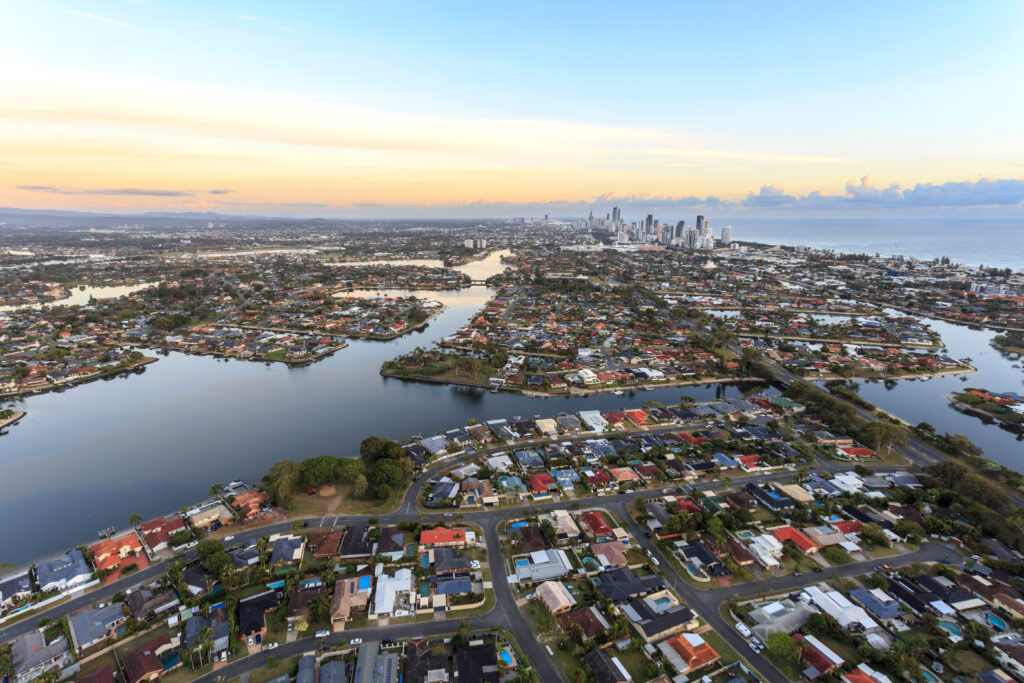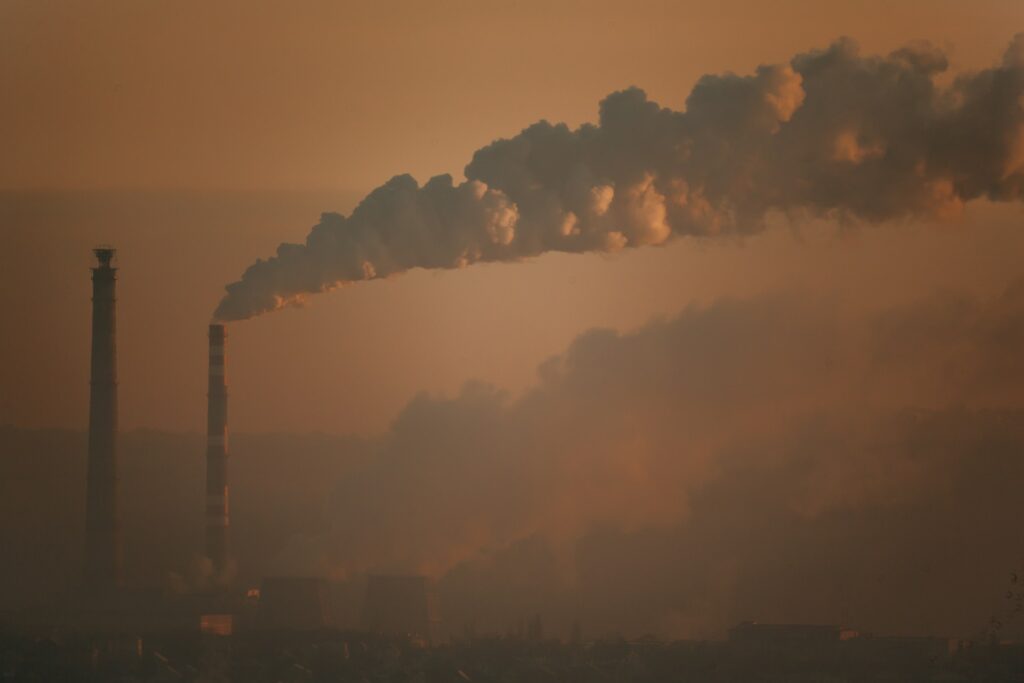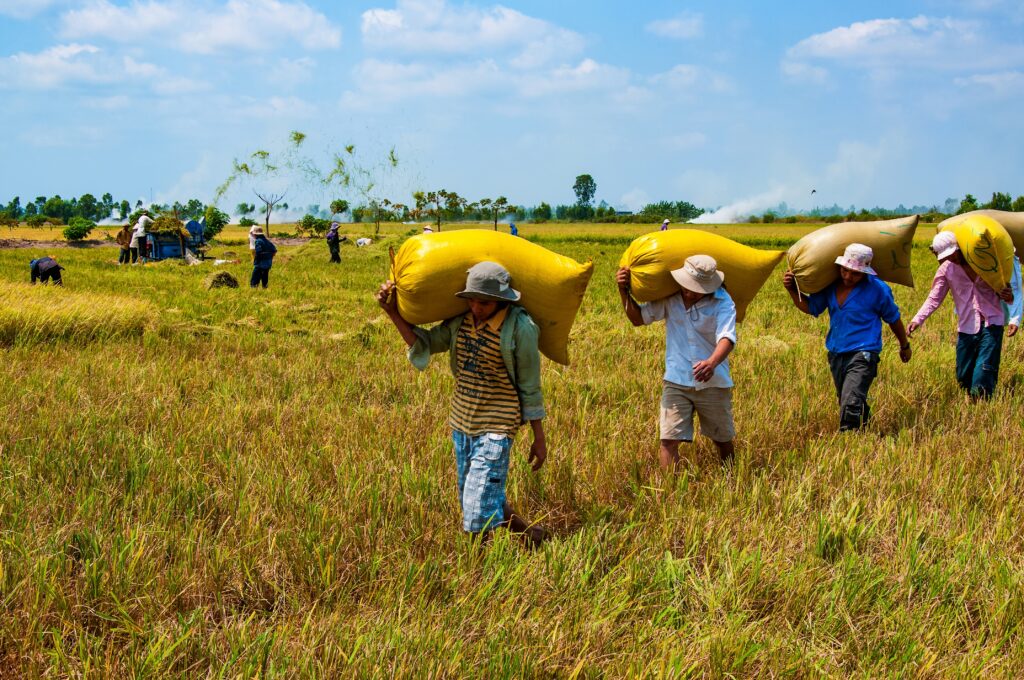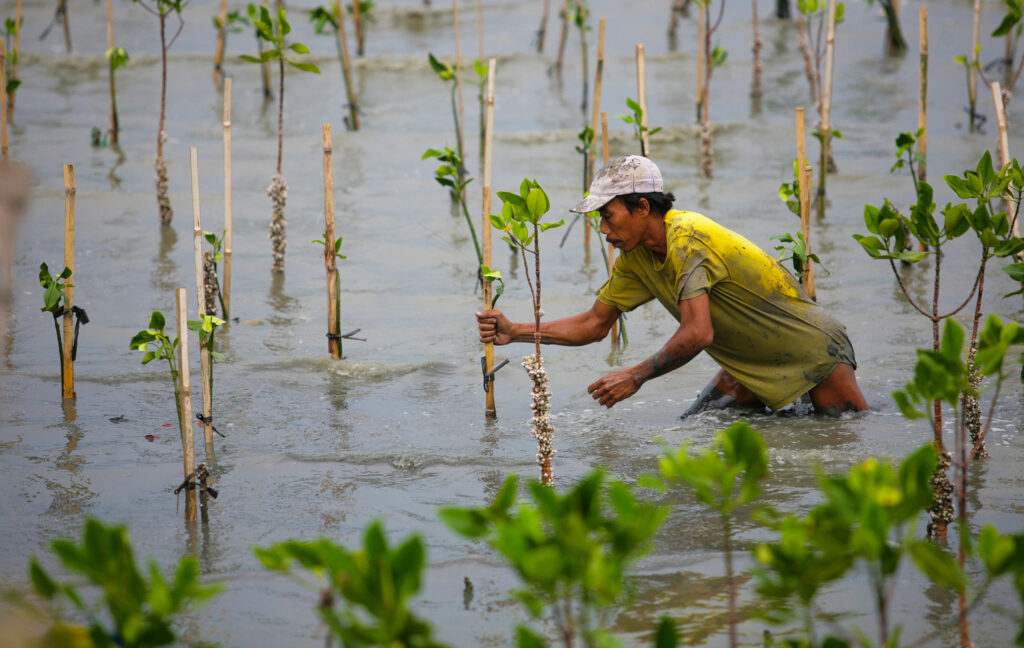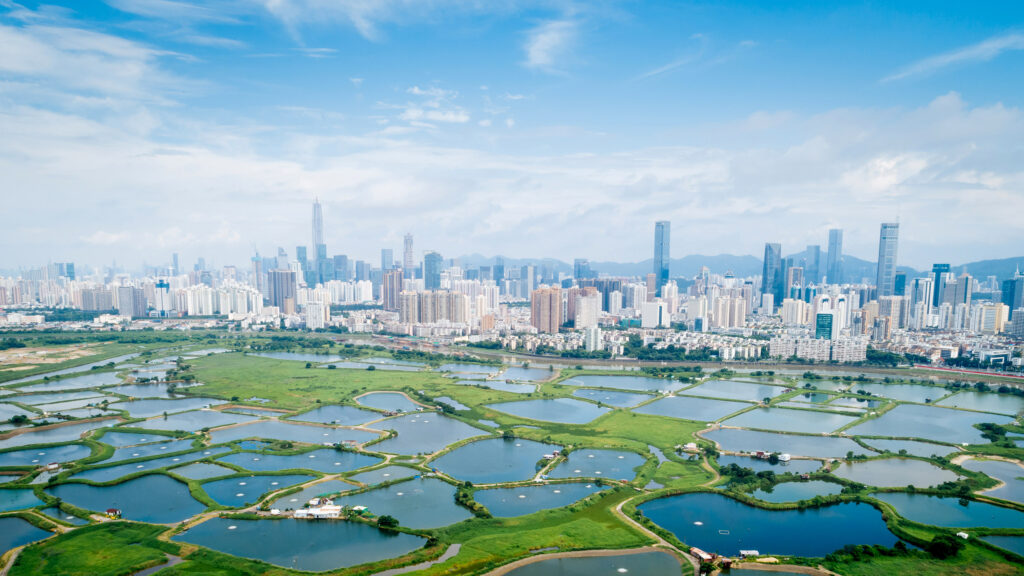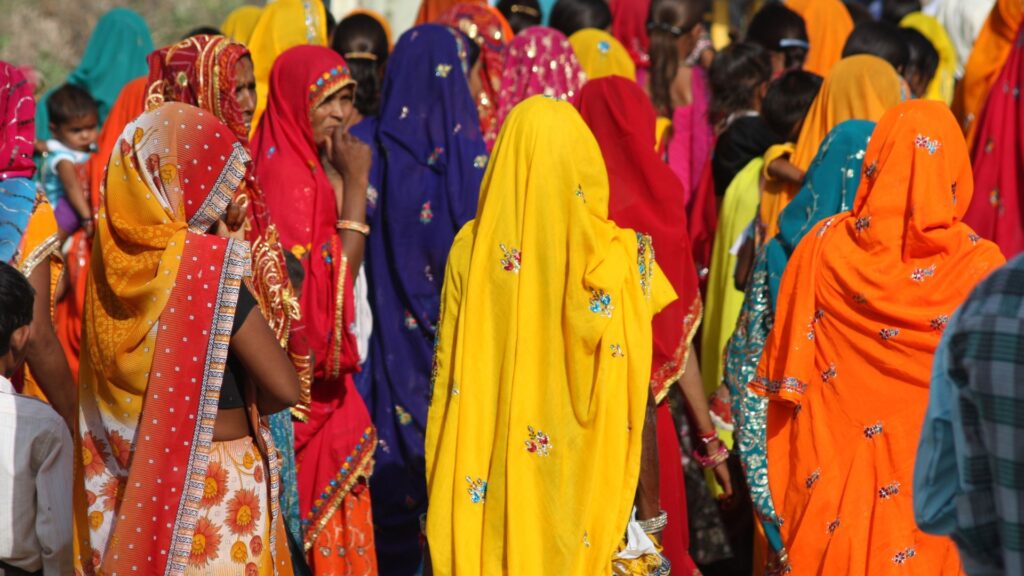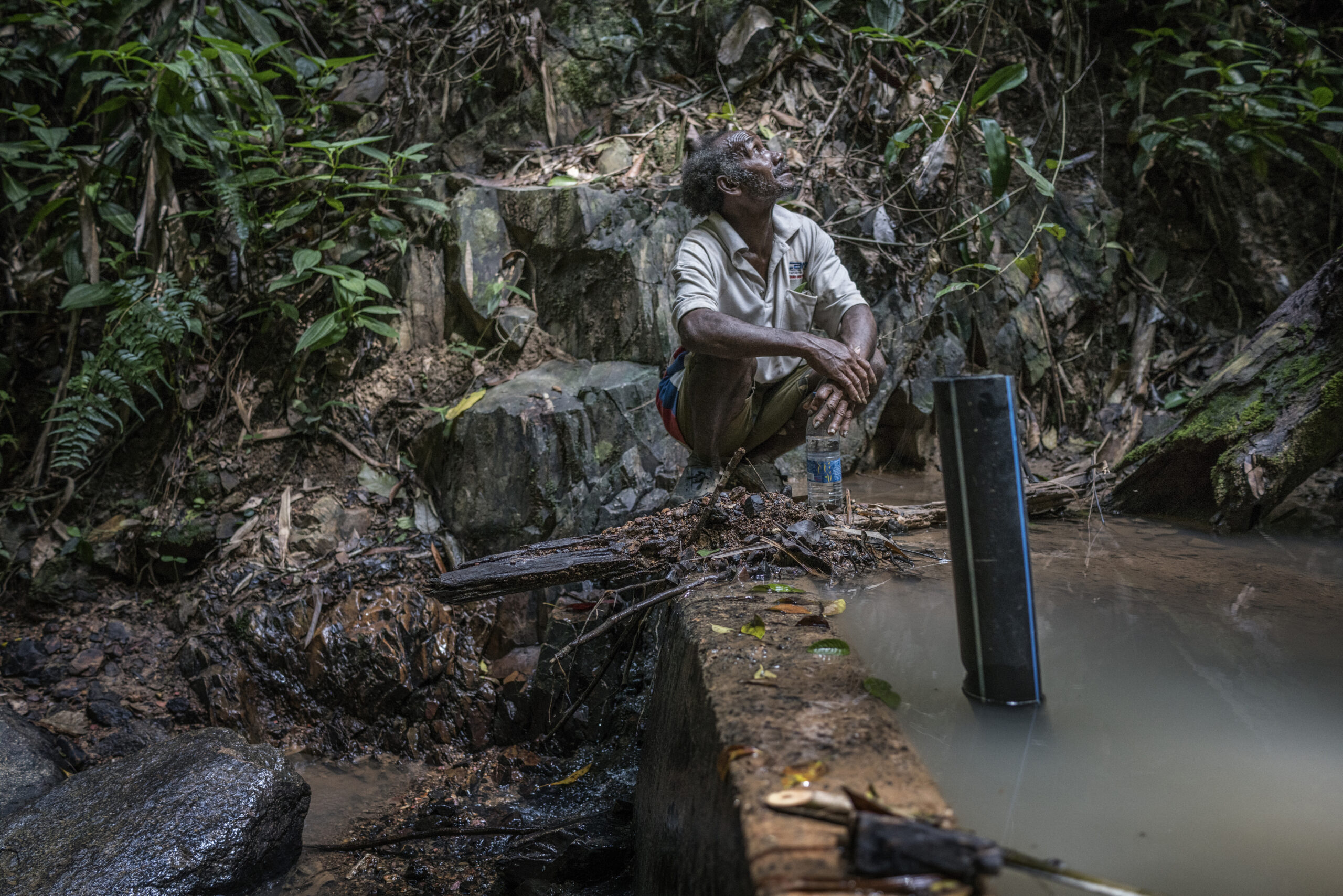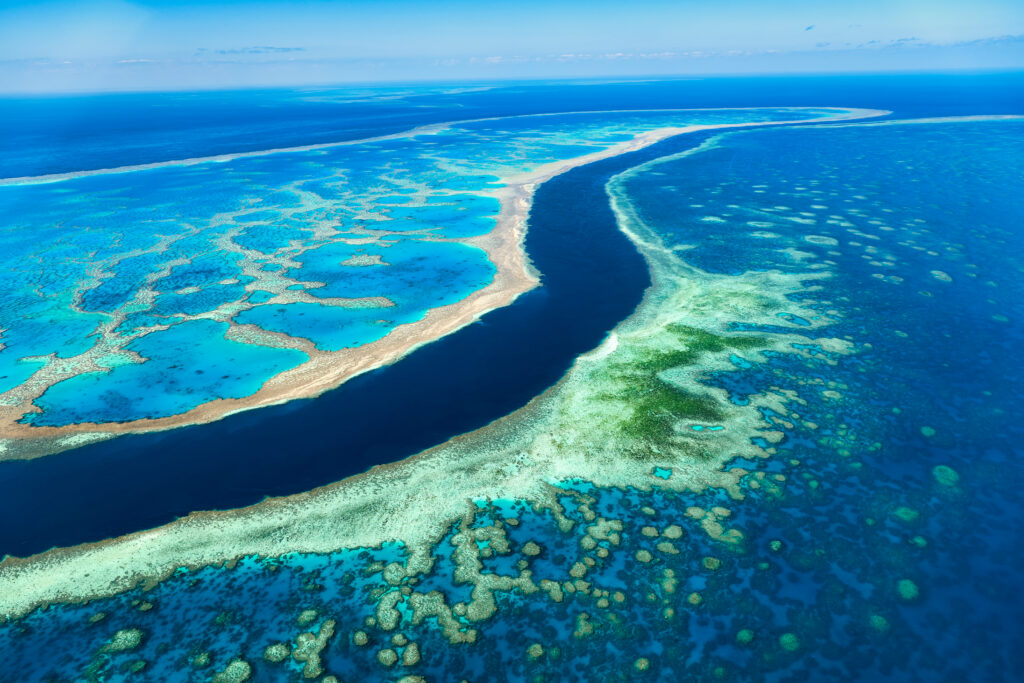On many mornings in Kuala Lumpur or Kuching, the air feels heavy, the horizon blurs and news alerts warn of “unhealthy” air pollution. Malaysia may not be the first country that comes to mind when considering smog and haze, but the data reveal a more urgent reality. As Southeast Asia’s economies expand, Malaysia faces a twin challenge: domestic emissions and seasonal haze from across borders. How serious is the problem of air pollution in Malaysia today, and what can be done?
How Bad Is Air Pollution in Malaysia?
Air Quality in Malaysia: Trends
In 2024, Malaysia’s average PM2.5 concentration was 18.32 µg/m³, which is nearly 3.7 times higher than the World Health Organization’s annual guideline of 5 µg/m³. The capital city, Kuala Lumpur, recorded a yearly average of 21.5 µg/m³, while industrial hubs like Johor Bahru and Kuching periodically spiked into the “unhealthy” range during haze events. Meanwhile, long-term studies on PM10, nitrogen oxides and carbon monoxide (CO) from 1997 to 2015 reveal persistent fluctuations influenced by industrial growth and periodic transboundary events.
For comparison, nearby Singapore averaged around 11 µg/m³, while Indonesia recorded roughly 35 µg/m³, illustrating that Malaysia’s pollution falls between its neighbours’ extremes. The data shows that pollution levels rise sharply during dry months, when smoke from regional forest and peatland fires drifts across the peninsula and Borneo, worsening local air quality.
These numbers indicate that while Malaysia isn’t in the ranks of the world’s worst smog capitals, its pollution levels are well above health-based thresholds.
Regional Hotspots – Polluted Cities
The Klang Valley, which encompasses Kuala Lumpur, Selangor and Putrajaya, consistently records the highest air pollution index (API) readings due to dense traffic and industrial zones. For instance, in 2019, Putrajaya registered 22.4 µg/m³, narrowly edging out Kuala Lumpur. Meanwhile, less industrialised states, such as Kedah or Perlis, generally register lower pollutant levels, reflecting their lower industrial and vehicular burdens.
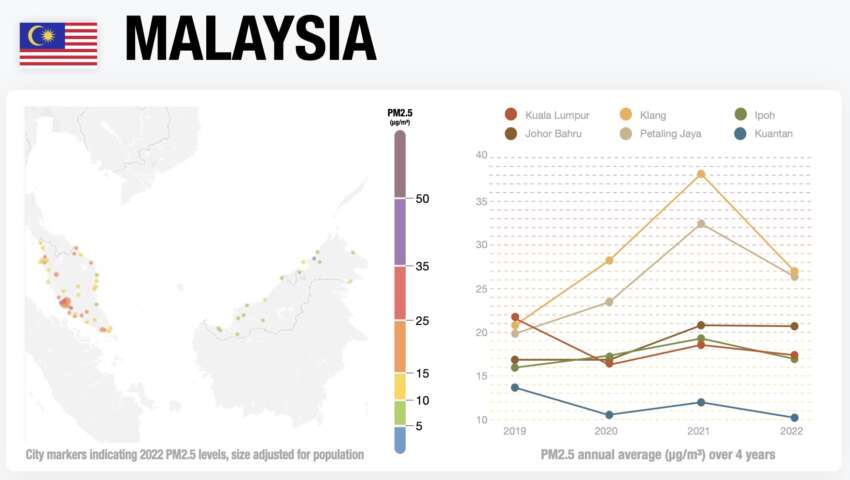
Malaysia’s Department of Environment (DOE) operates 51 continuous air monitoring stations, tracking PM2.5, PM10, ozone, nitrogen oxides and sulphur dioxide. These networks provide vital data for air quality forecasts and for policymakers confronting the haze season each year.
What Causes Air Pollution in Malaysia?
Most air pollution in Malaysia comes from vehicles, industry and power generation. Research using data from the Department of Environment (DOE) shows that road transport is a major source of pollutants such as carbon monoxide and nitrogen oxides, responsible for roughly 95% of CO and 24% of NO₂ emissions nationwide.
The country’s energy mix remains carbon-intensive, with fossil fuels supplying over 90% of total electricity generation, sustaining background emissions from power and manufacturing. In rural areas, the burning of agricultural residues, particularly in paddy and palm oil regions, further worsens seasonal air quality.
Seasonal transboundary haze from Indonesian forest and peatland fires further worsens air quality, with smoke periodically pushing the API into “unhealthy” levels across Malaysia.
Health and Economic Impacts of Ambient Air Pollution in Malaysia
The human cost of air pollution in Malaysia is severe. Estimates show that poor air quality contributes to roughly 32,000 premature deaths annually, primarily from heart disease, lung cancer and respiratory infections. Deforestation also adds to air pollution while damaging the livelihoods of local communities.
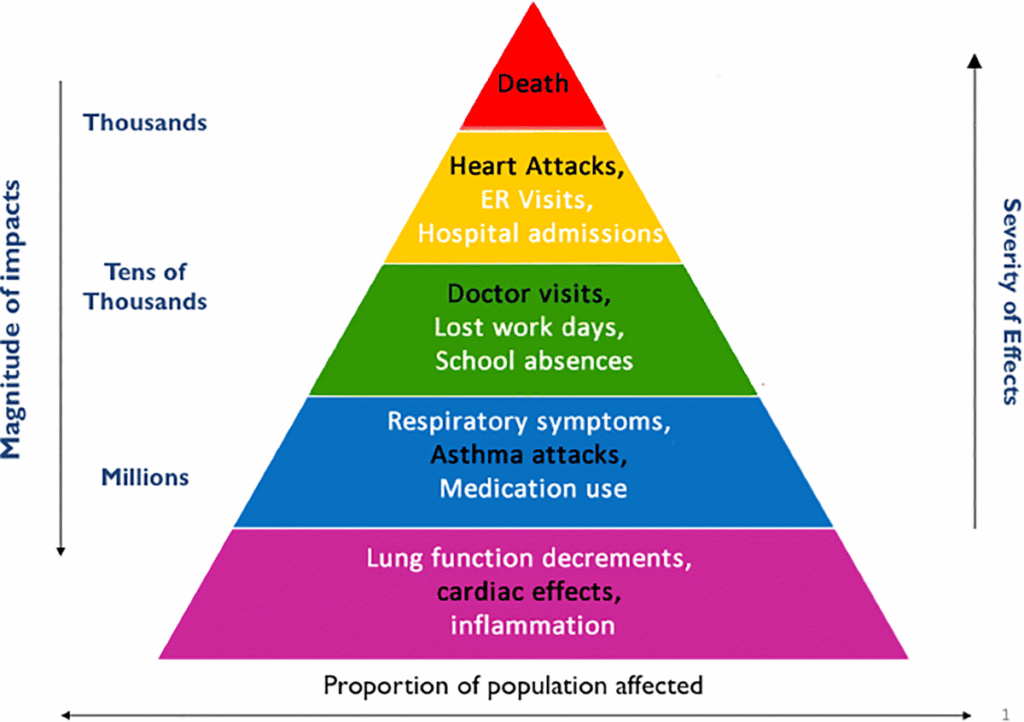
Beyond human health effects, polluted air harms crops, degrades forests and contributes to biodiversity loss through acidification and reduced photosynthesis.
The economic costs are equally sobering. The combined health and productivity losses from air pollution could cost Malaysia approximately USD 73 billion annually. This works out to a per capita cost of USD 2,200, which is around 15% of the country’s per capita GDP. The OECD similarly warns that pollution further threatens labour productivity and tourism revenues.
Government and Policy Response
Malaysia is actively updating its air quality strategy with the draft National Clean Air Action Plan (NCAAP) 2025-2040, which will guide stakeholders toward improved ambient air standards.
Regionally, Malaysia remains an active party to the ASEAN Agreement on Transboundary Haze Pollution (AATHP). In 2023, ASEAN environment ministers reaffirmed full and effective implementation, including monitoring and peatland fire prevention cooperation, central to managing haze episodes that drive Malaysia’s worst air days.
Complementary national transitions that help reduce emissions from power and transport, major contributors to air pollution, are outlined in Malaysia’s National Energy Transition Roadmap, with goals such as a cleaner power mix and electrified mobility. These types of initiatives support broader air quality gains over time.
Toward Cleaner Air and Climate Resilience
Air pollution in Malaysia is a product of both progress and geography. Industrial growth, vehicle use and proximity to burning forests all combine to cloud its skies. Yet, the trajectory is not fixed. But the data shows two positive truths. First, Malaysia’s pollution is measurable and therefore manageable. Second, momentum is building in policy, technology and regional cooperation.
By tightening domestic emission controls, investing in clean mobility and actively engaging in haze mitigation across borders, Malaysian government can begin to tilt the balance toward clearer skies. In doing so, it safeguards public health, sustains the economy and enhances Malaysia’s climate resilience. Cleaner air, in short, is one of Malaysia’s most powerful opportunities for a healthier and more sustainable future.
Eric Koons
Writer, United States
Eric is a passionate environmental advocate that believes renewable energy is a key piece in meeting the world’s growing energy demands. He received an environmental science degree from the University of California and has worked to promote environmentally and socially sustainable practices since. Eric has worked with leading environmental organisations, such as World Resources Institute and Hitachi ABB Power Grids.
Eric is a passionate environmental advocate that believes renewable energy is a key piece in meeting the world’s growing energy demands. He received an environmental science degree from the University of California and has worked to promote environmentally and socially sustainable practices since. Eric has worked with leading environmental organisations, such as World Resources Institute and Hitachi ABB Power Grids.

